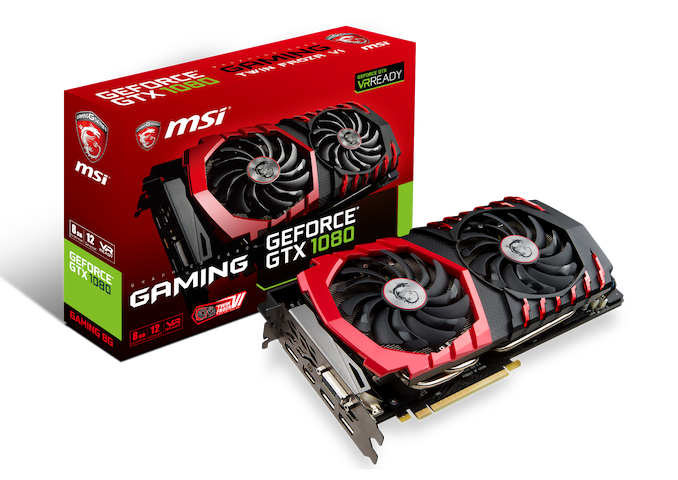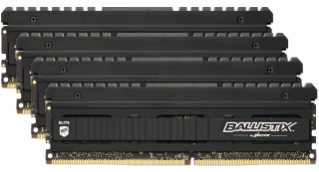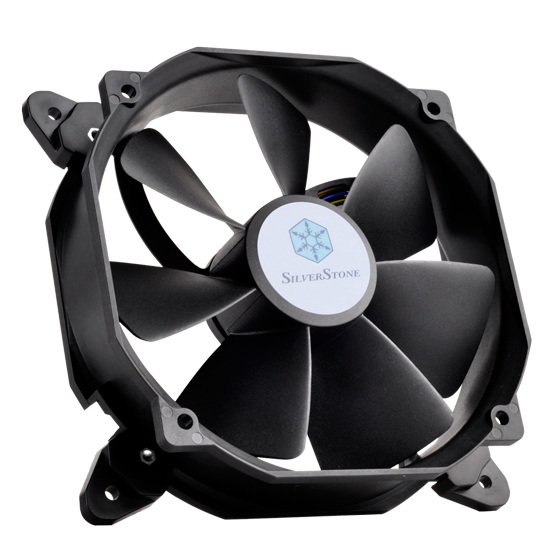The ASRock Z490 PG Velocita Motherboard Review: It Means SPEED
by Gavin Bonshor on September 21, 2020 9:00 AM ESTBoard Features
The ASRock Z490 PG Velocita is an ATX-sized offering catering to the mid-range which is targeting gamers. The PG stands for Phantom Gaming which is one of ASRock's premium gaming series, with the Velocita coming from the Italian word for speed. It uses a typical mid-range feature set which includes dual PCIe 3.0/SATA M.2 slots, with eight SATA ports, six from the chipset with RAID 0, 1, 5, and 10 support, and two from an ASMedia SATA controller. The board has four memory slots with supported speeds of DDR4-4666 and a total capacity of up to 128 GB. In the middle section of the board are two full-length PCIe 3.0 slots that run at x16/+x4, with three PCIe 3.0 x1 slots. Located around the board are seven 4-pin fan connectors, with one dedicated to a CPU, one for an optional CPU fan and water pump, and five for chassis fans.
| ASRock Z490 PG Velocita ATX Motherboard | |||
| Warranty Period | 3 Years | ||
| Product Page | Link | ||
| Price | $260 | ||
| Size | ATX | ||
| CPU Interface | LGA1200 | ||
| Chipset | Intel Z490 | ||
| Memory Slots (DDR4) | Four DDR4 Supporting 128 GB Dual-Channel Up to DDR4-4666 |
||
| Video Outputs | 1 x HDMI 1.4 1 x DisplayPort 1.4 |
||
| Network Connectivity | Realtek RTL8125BG 2.5 GbE Intel I129-V GbE |
||
| Onboard Audio | Realtek ALC1220 TI EN5532 Amplifier (Front Panel) |
||
| PCIe Slots for Graphics (from CPU) | 1 x PCIe 3.0 (x16) | ||
| PCIe Slots for Other (from PCH) | 1 x PCIe 3.0 x4 3 x PCIe 3.0 x1 |
||
| Onboard SATA | Six, RAID 0/1/5/10 (Z490) Two, (ASMedia) |
||
| Onboard M.2 | 2 x PCIe 3.0 x4/SATA | ||
| USB 3.1 (20 Gbps) | N/A | ||
| USB 3.1 (10 Gbps) | 1 x USB Type-A (Rear panel) 1 x USB Type-C (Rear panel) |
||
| USB 3.0 (5 Gbps) | 4 x USB Type-A (Rear panel) 4 x USB Type-A (Two headers) 1 x USB Type-C (One header) |
||
| USB 2.0 | 4 x USB Type-A (Two headers) | ||
| Power Connectors | 1 x 24-pin Motherboard 2 x 8-pin CPU |
||
| Fan Headers | 1 x 4-pin CPU 1 x 4-pin CPU/Water pump 5 x 4-pin Chassis |
||
| IO Panel | 1 x PS/2 Mouse/Keyboard 1 x HDMI 1.4 output 1 x DisplayPort 1.4 output 1 x USB 3.2 G2 Type-A 1 x USB 3.2 G2 Type-C 4 x USB 3.2 G1 Type-A 1 x RJ45 (Realtek) 1 x RJ45 (Intel) 5 x 3.5 mm audio jacks (Realtek) 1 x S/PDIF Optical output (Realtek) |
||
The ASRock Z490 PG Velocita omits any form of a wireless interface, which is a little disappointing given some models it competes with include Wi-Fi 6. Focusing on what's included, is a pair of USB 3.2 G2 ports (Type-A and Type-C, with four USB 3.2 G1 Type-A ports. Users looking to use integrated graphics can make use of the HDMI 1.4 and DisplayPort 1.4 video output pairing, while the board includes a premium Realtek ALC1220 HD audio codec with a TI NE5532 headset amplifier to bolster the quality of the front panel audio. Networking wise, the PG Velocita has two Ethernet ports, with one powered by a Realtek RTL8125BG 2.5 G Ethernet controller and the other by a standard Intel I219-V Gigabit controller.
Test Bed
As per our testing policy, we take a high-end CPU suitable for the motherboard that was released during the socket’s initial launch and equip the system with a suitable amount of memory running at the processor maximum supported frequency. This is also typically run at JEDEC subtimings where possible. It is noted that some users are not keen on this policy, stating that sometimes the maximum supported frequency is quite low, or faster memory is available at a similar price, or that the JEDEC speeds can be prohibitive for performance. While these comments make sense, ultimately very few users apply memory profiles (either XMP or other) as they require interaction with the BIOS, and most users will fall back on JEDEC supported speeds - this includes home users as well as industry who might want to shave off a cent or two from the cost or stay within the margins set by the manufacturer. Where possible, we will extend out testing to include faster memory modules either at the same time as the review or a later date.
| Test Setup | |||
| Processor | Intel Core i7-10700K, 125 W, $374 8 Cores, 16 Threads 3.8 GHz (5.1 GHz Turbo) |
||
| Motherboard | ASRock Z490 PG Velocita (BIOS 1.50) | ||
| Cooling | Corsair H115i RGB Pro XT 280 mm AIO | ||
| Power Supply | Corsair HX850 850 W 80 PLUS Platinum | ||
| Memory | G.Skill TridentZ DDR4-2933 CL 14-14-14-34 2T (2 x 8 GB) | ||
| Video Card | MSI GTX 1080 (1178/1279 Boost) | ||
| Hard Drive | Crucial MX300 1TB | ||
| Case | Corsair Crystal 680X | ||
| Operating System | Windows 10 1909 inc. Spectre/Meltdown Patches | ||
Readers of our motherboard review section will have noted the trend in modern motherboards to implement a form of MultiCore Enhancement / Acceleration / Turbo (read our report here) on their motherboards. This does several things, including better benchmark results at stock settings (not entirely needed if overclocking is an end-user goal) at the expense of heat and temperature. It also gives, in essence, an automatic overclock which may be against what the user wants. Our testing methodology is ‘out-of-the-box’, with the latest public BIOS installed and XMP enabled, and thus subject to the whims of this feature. It is ultimately up to the motherboard manufacturer to take this risk – and manufacturers taking risks in the setup is something they do on every product (think C-state settings, USB priority, DPC Latency / monitoring priority, overriding memory sub-timings at JEDEC). Processor speed change is part of that risk, and ultimately if no overclocking is planned, some motherboards will affect how fast that shiny new processor goes and can be an important factor in the system build.


















16 Comments
View All Comments
YB1064 - Monday, September 21, 2020 - link
It would be nice if you can thrown in a comparable dataset from an AMD system. It wouldn't be remiss to cut out motherboard gaming benchmarks altogether. The motherboard stopped being a factor cince, 2001 (?)Udyr - Monday, September 21, 2020 - link
Although I agree with you that some comparison is necessary for the majority of users to have a "visual" difference vs other products, the board has always been a factor. Bad VRM, conductor and other important parts of it have to work properly for the overall system to have good stability, otherwise you start having random issues or, worst case scenario, fried componentsYB1064 - Monday, September 21, 2020 - link
The stress tests should bring out any issues with the VRM. Gaming benchmarks don't add much to a MB review.oRAirwolf - Tuesday, September 22, 2020 - link
I think it is good just to validate that there are no glaring performance issues that haven't been addressed. I agree that the benchmarks are pretty much useless otherwise though.AMDSuperFan - Monday, September 21, 2020 - link
Why didn't they benchmark this system with an AMD CPU in it? Scared?Tomatotech - Tuesday, September 22, 2020 - link
Absolutely agree. Don’t forget the hammer to help install an AMD cpu in it. The benchmarks won’t be great though.mattkiss - Monday, September 21, 2020 - link
Hmm...Buildzoid didn't like this mobo very much: https://www.youtube.com/watch?v=qmKiwDL3UrAwhatthe123 - Monday, September 21, 2020 - link
Seems more accurate than this review. This review just focuses on general performance out of the box if a normal single gpu config, so yes it's similar in performance with but with better DPC latency.Problem is other models at this price point have more features and/or more efficient/powerful VRM design that doesn't require a bunch of little fans. The little fans are what help it drop VRM temps down to the 60s, but most VRMs don't really have any degradation problems even at in the 90Cs, so it's not clear what the price premium is paying for except DPC latency.
mattkiss - Wednesday, September 23, 2020 - link
"This review just focuses on general performance out of the box if a normal single gpu config, so yes it's similar in performance with but with better DPC latency."Not sure I understand your statement...both reviews are of the ASRock Z490 PG Velocita.
whatthe123 - Friday, September 25, 2020 - link
I meant that as in, this review compares the velocita in a single GPU config against other motherboards then just checks the results, whereas buildzoid's review actually looks into what features the board provides and how it manages to achieve its results i.e. a bunch of proprietary small fans when competitors have passive cooling more than good enough to keep VRMs stable.The conclusion anandtech's review makes only makes sense if you ignore all the other features offered by competitors. Otherwise it doesn't make sense because you're paying the same price and getting fewer features on top of having more moving parts that can fail.